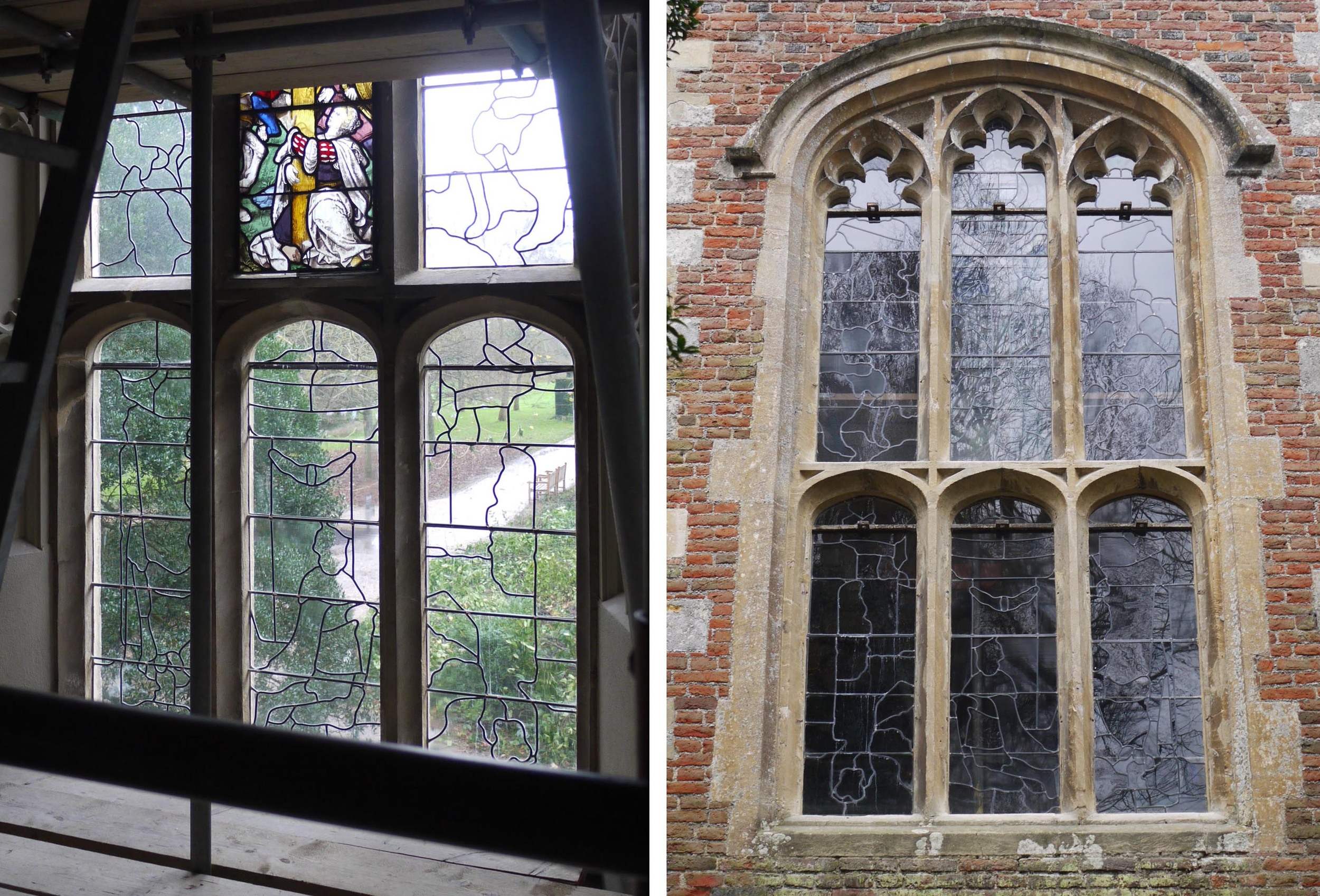Getting into churches is a chancey business, often about half the ones on my planned route are locked. Some are locked in a very uninviting way that makes the church look like a building site, such as All Saints, Netheravon, Wiltshire (below), with an arrow to an entrance that looked as if it was never used.
West facing door, All Saints, Netheravon
Two of the churches on this route along the River Avon in Wiltshire had inviting doors, an outer one at Figheldean (below left) and a solid dated interior door at Fittleton cum Haxton (below right). At this stage, after four churches (two open, two locked) I hadn't found any stained glass that was interesting or different from windows that I had seen before, the doors were all that I wanted to photograph.
South porch doors: Left St Michael & All Angels, Figheldean: Right All Saints, Fittleton
However as I was leaving Fittleton church, I looked towards the tower through a filthy glazed screen and saw two brown rectangular stained glass panels (below). As the door to the tower was locked (sigh!) I could only see from a distance the vaguely heraldic pattern in the middle of patterned stars.
A locked door usually leads you to look at the back of the windows. Here they look great (below), such lovely colours and textures in the combination of glass, lead and stone. The glass paint is totally opaque so all you can see are brown tones in a pattern of lead lines governed by the way the glass has been damaged, in a completely different way for each window. They were obviously worth preserving.
West facing window, All Saints, Fittleton
My last church, open so final score 3-2, had a beautiful interior (below). It is one of those churches with clear glass in the windows and, perhaps as a result, it is the pale coloured stone of the carved arches and columns that glow with light.
Inside All Saints, Enfold and a squint in the nave wall.











